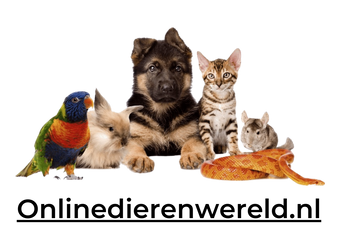
Anti-trachea mite (10 ml)
Beaphar Anti-Trachea Mite (10 ml)
Veterinary medicine for the control of trachea mites in canaries, finches and other aviary birds. Also effective against mange in parakeets (scaly face). This product can also be used against lime feet in ornamental birds. The liquid comes in a handy dropper bottle.
Active ingredient: ivermectin 0.12%
The mite, sternostoma tracheacolum, occurs in canaries and gouldian finches, but has also been found in other finches, Japanese gulls, goldfinches, zebra finches, parrots and budgerigars.
Disease symptoms
The mites cause inflammation, partly because they hook themselves with their claws in mucous membranes and suck blood from the host. Externally one sees some loss of condition, a little bulging in the feathers, loss of voice (canaries), breathing disorders with some smacking and squeaking sounds.
At fairly regular intervals, swallowing movements are made and strangling attempts are seen to work something up from the trachea, often moving the head as if the bird wanted to hurl something away. Deaths can occur in severe infections.
Demonstration of the trachea mite in the living bird:
The mites are located in the trachea, lungs and air sacs , embedded in some slime. If the mites are present in the trachea, you can sometimes observe them in the living bird if you act as follows. Dampen the feathers of the neck with water and then wipe them up and down so that a strip of unfeathered skin is exposed on both sides of the neck. By now pulling out the neck skin towards the chest side, the trachea comes to lie in the skin fold. If you then hold the bird in front of a light, you will see the mites as black dots in the trachea.
How does the infection with the mites take place?
Both aviary birds and birds in the wild can be carriers of the mite for a long time without getting sick. In this way, the mite can be introduced into a bird population unnoticed. Infection of the other birds takes place through the young mites that live in the nasal cavity. The infection can be transmitted directly, via drinking water, via the feed or when feeding the young birds by their parents. External conditions, such as too high or too low humidity and temperature, food or
environmental change and social stress can suddenly make the disease acute. From the contamination with the mite it can take weeks or even months before the symptoms of the disease appear.
Combating the trachea mite:
To be able to combat the trachea mite effectively it is important that all mites, including those in deeper parts of the air sac system or in the abdominal cavity, are reached. That is why Beaphar has opted for the so-called spot-on system. The active agent is applied directly to the skin. The fluid penetrates the skin, is absorbed into the blood and kills all mites present in the body.
Instructions for use:
When detecting trachea mites all birds in the aviary must be treated. The dose is 1 drop per bird (for budgerigars and heavier birds, 2 drops per bird are recommended), to be applied to the unfeathered skin in the neck area. It is absolutely necessary to sweep the feathers to the side and to apply the drop to the skin and not to the feathers, because otherwise the agent cannot be absorbed through the skin.
When opening the bottle, the following steps should be taken. Unscrew the cap. Then lightly squeeze the red part of the cap. Now liquid is sucked up into the dropper. Now lift the cap out of the bottle. The liquid is in the dropper.By exerting a light pressure with your index finger and thumb on the red part of the cap, a drop is released from the dropper. This way you can dose per drop.
Repeating the treatment
To prevent a bird that has escaped attention from reinfecting the entire aviary again, it is recommended to repeat the treatment after 4 weeks. Because feeding and drinking troughs and troughs in which birds bathe can also be sources of reinfestation, it is recommended that they be thoroughly cleaned and disinfected.
Time of application:
Preferably the birds should be treated
1-2 months before the breeding period to prevent nest contamination.
Remarks:
1 . Not all symptoms of shortness of breath are caused by trachea and
air sac mites. If in doubt, consult your veterinarian.
2. Since birds infected with trachea mites are often severely weakened, the
treatment must be carried out with the necessary caution, avoiding as much stress as possible.
Property:
Active ingredient: Ivermectin 0.12%
Content: 10 ml, more than sufficient for about 250 birds or for 125 parakeets and heavier birds.
Store in a cool and dark place. Keep out of reach of children.

